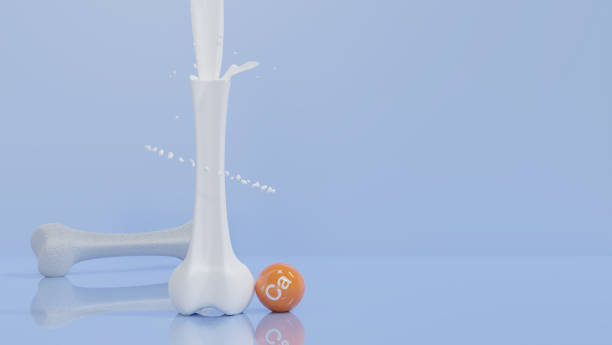October gives us a chance to observe Bone and Joint Health Awareness Week from October 12th to 20th. Use this week to learn more about your bones and how to keep them healthy!
Our bones are made of protein, collagen, and minerals like calcium. They have multiple functions in our bodies, including providing a strong framework to support and protect soft organs, holding up our bodies and helping us move, making blood cells, and storing and releasing factors into the blood that are necessary for organs’ normal functioning.
While it may seem like our bones do not change, our skeleton is made up of living tissue that is constantly changing through a process called remodeling. Through this process, our bones are removed and replaced in the same amounts. As we get older, this process may become unbalanced in which more bone is removed than is replaced. This results in weaker bones and can increase risk of diseases like osteoporosis.
Two important factors for maintaining healthy bones are healthy diet and exercise.
Healthy Diet
Two key nutrients in maintaining strong bones are calcium and vitamin D.
Calcium is a mineral that maintains bone health. Our bodies cannot make calcium. We get calcium from our diet and supplements. The best food sources of calcium are dairy milk and products like cheese and yogurt. There are other food sources such as fatty fish, leafy green vegetables, tofu, and small fish with bones like sardines. Some foods are fortified with calcium like certain juices, non-dairy milks, and breakfast cereals.
Calcium not only helps maintain healthy bones, but it also helps our muscles, heart, and nerves work properly. If we do not get enough calcium in our diet, our body takes the calcium from our bones. If this continues over time, this increases the risk of bone diseases like osteoporosis.
Vitamin D works with calcium to maintain a strong skeleton. It helps us absorb the calcium we get from food and promotes healthy functioning of our muscles and immune system, so we reduce the risk of falling and breaking our bones. Not many foods contain vitamin D. Some fatty fish naturally provide some vitamin D, but most of our food sources are fortified with vitamin D such as dairy products, breakfast cereals, and orange juice.
Another way to be sure you have enough calcium and vitamin D intake is to take a supplement. Talk to your health care provider if you are thinking about taking any supplements!
Exercise
We need strong muscles to help us balance and reduce the risk of falling and breaking our bones, make our bones denser, and prevent bone loss. There are three different types of exercises that help us build and maintain healthy bones: weight-bearing exercises, resistance training exercises, and balance training.
Weight-bearing exercises produce a force on our bones that makes them work harder. This can look like a brisk walk, running, racket sports, climbing stairs, or even dancing. Resisance training exercises, such as weight lifting, add stress on bones and make them stronger. You can use weight machines, free weights, resistance bands, or even your own body weight. Thirdly, balance training helps prevent falls. Examples of this can be walking on a foam mat, walking backwards, step-ups, or lunges.
All healthy adults should aim for at least 150 minutes a week of moderate-intensity exercise or at least 75 minutes a week of vigorous-intensity exercise. If you are unsure of where to start or how to start, speak with your physician for guidance.
For more information on bone health, please refer to the National Institute of Arthritis and Musculoskeletal and Skin Diseases.
Written by:
Laura Ortiz, MS, RD, LDN


